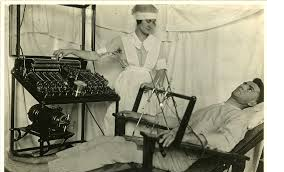Sign up for FlowVella
Sign up with FacebookAlready have an account? Sign in now
By registering you are agreeing to our
Terms of Service
Loading Flow


Psychology And Psychiatry
The increasing affluence and the growing consumerism of the 1920s produced new psychological challenges. The rise of anxiety and alienation characteristics ailments of the consumer age coincided with the theories of psychology and psychiatry. These phenomenas helped expand important fields in medicine and science.
Psychiatry had been spreading in the U.S. since the early twentieth century, driven by the increasing awareness of the theories of Sigmund Freud and Carl Jung. Even though they differed on many points they both help legitimize the idea of exploring the unconscious as a way of discovering the roots of mental problems. Psychoanalysis attracted Americans adherents as early as 1912 and spread in the 1920s. John B. Watson of Johns Hopkins University said that mental ailments like physical ones should be treated by observation and treatment of symptoms. The point of therapy was to modify behavior and reinforce "acceptable" actions. It had a significant success in treating disorders like alcoholism, drug addiction, and phobias.
Psychoanalysis and other forms of therapy could performed by psychologist without medical training, the biggest growth in psychiatry was as a field of medicine. Psychiatry began to expand its claims and offer services not just to the mentally ill but to stable individuals experiencing difficulties in everyday life. A new theory of "dynamic" psychiatry emerged in the twentieth century and by the 1920s it had help offer therapy for anxiety, not only severe mental disturbance. Women played a much larger role than in most areas of medicine. That was because training in psychology was considered valuable occupations in which women were traditionally dominant- teaching, social work, nursing. Women who had medical training often found it easier to establish themselves, more tradition male-dominated areas of medicine.

